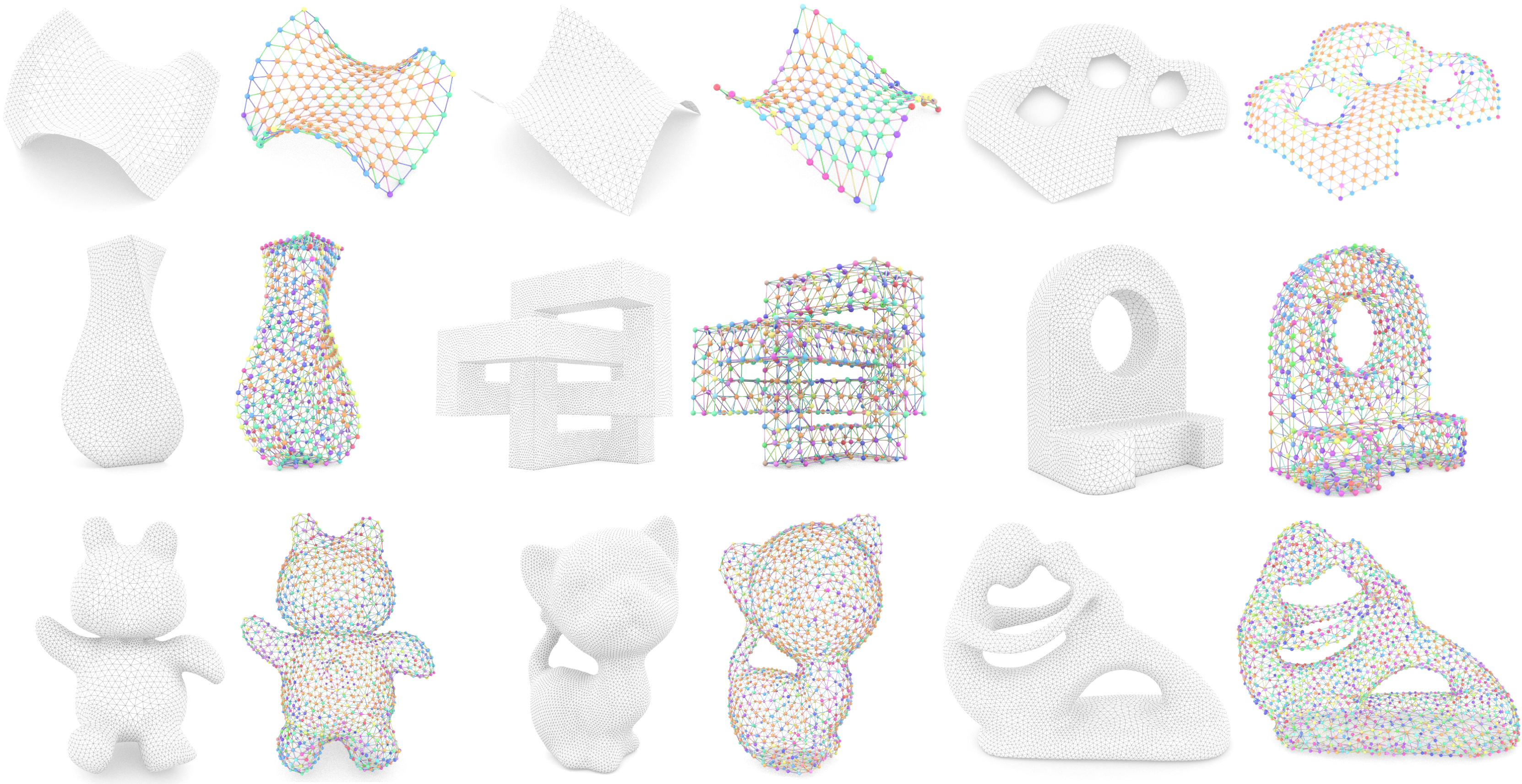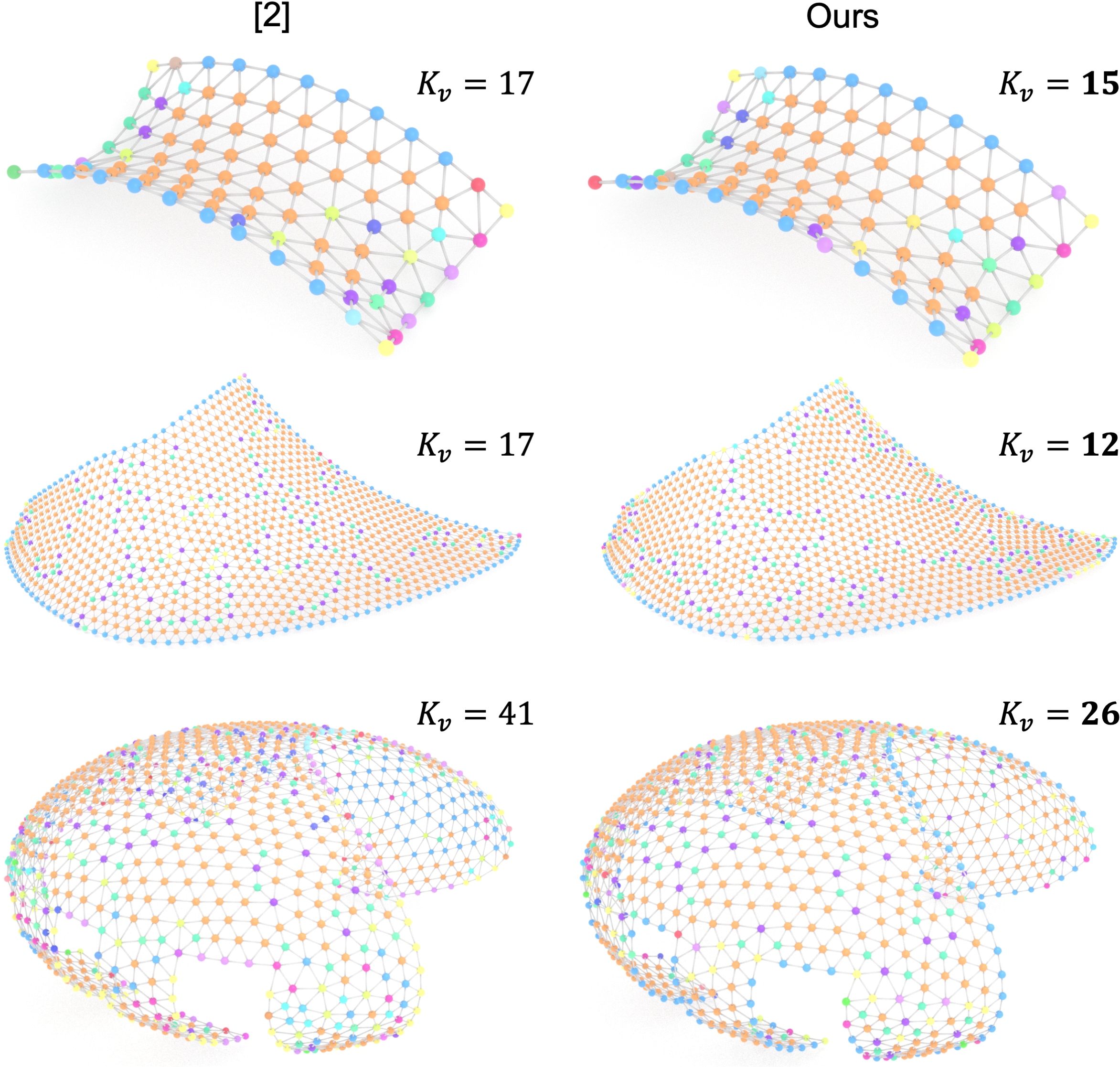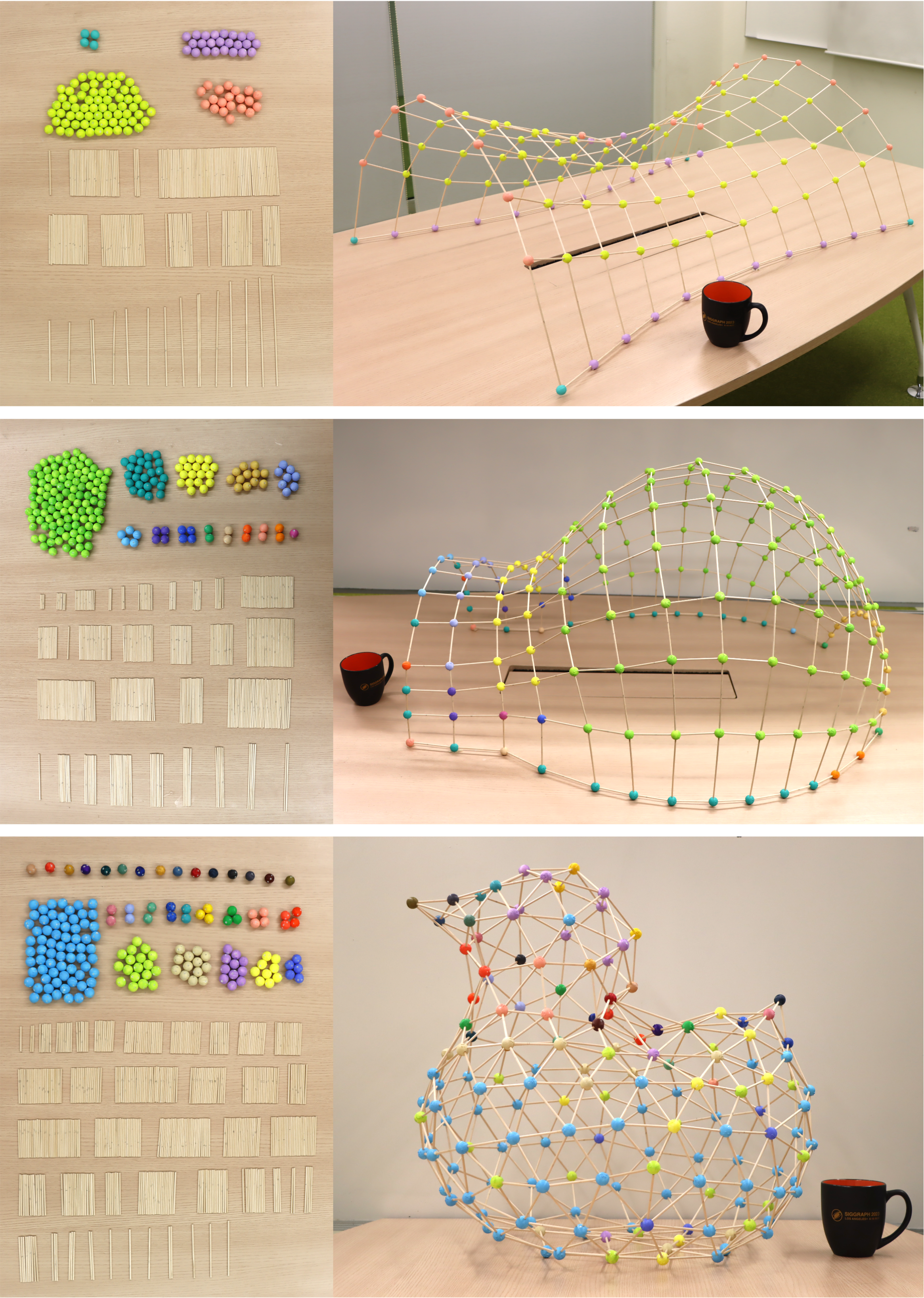Modeling Wireframe Meshes with Discrete Equivalence ClassesIEEE Transactions on Visualization and Computer Graphics, regular paper (* joint 1st authors) |

Figure 1: An IGLOO surface with an original mesh containing 196 vertices and 364 edges optimized to 14 classes of vertices and 30 classes of edges using our approach. Left: a rendering of our optimized wireframe mesh, where vertices and edges in the same class are rendered with the same color, respectively. Middle: fabricating the wireframe mesh with 3D printed nodes and precision-cut wooden rods. Right: (top) nodes and rods of the same class are clustered together, and (bottom) a close-up view of the assembled nodes and rods.
Abstract
We study a problem of modeling wireframe meshes where the vertices and edges fall into a set of discrete equivalence classes, respectively. This problem is motivated by the need of fabricating large wireframe structures at lower cost and faster speed since both nodes (thickened vertices) and rods (thickened edges) can be mass-produced. Given a 3D shape represented as a wireframe mesh, our goal is to compute a set of template vertices and a set of template edges, whose instances can be used to produce a fabricable wireframe mesh that approximates the input shape. To achieve this goal, we propose a computational approach that generates the template vertices and template edges by iteratively clustering and optimizing the mesh vertices and edges. At the clustering stage, we cluster mesh vertices and edges according to their shape and length, respectively. At the optimization stage, we first locally optimize the mesh to reduce the number of clusters of vertices and/or edges, and then globally optimize the mesh to reduce the intra-cluster variance for vertices and edges, while facilitating fabricability of the wireframe mesh. We demonstrate that our approach is able to model wireframe meshes with various shapes and topologies, compare it with three state-of-the-art approaches to show its superiority, and validate fabricability of our results by making three physical prototypes.
Download
Paper PDF (~49.6M)Supplementary PDF (~0.2M)
Supplementary Data (~32.8M)
Video
Results

Figure 2:
Our approach allows modeling wireframe meshes with discrete equivalence classes for surfaces with various shapes and topologies.
The input surface is shown beside each result.

Figure 3:
Comparing [Liu et al. 2023] with our approach (Ours) as well as a variation of our approach (Ours_vertex) to model a quad mesh with discrete equivalence classes of vertices.
This comparison result shows that clustering-and-optimizing mesh vertices and edges simultaneously can help to reduce the number (Kv) of distinct vertices.

Figure 4:
Comparing [Xiong et al. 2022] with our approach to model three architectural surfaces with discrete equivalence classes of vertices, where our approach generates a smaller number (Kv) of vertex classes for each surface.
This comparison result shows the effectiveness of our local-global optimization scheme to reduce the number of distinct vertices.

Figure 5: We fabricate three of our modeled wireframe meshes with 3D printed nodes and precision-cut rods. Fabricated nodes and rods of the same class are clustered together on the left. A mug is put beside each structure to show its real scale.
Acknowledgments
The authors would like to thank Yi Min Xie for sharing the quad mesh in Figure 16, Weidan Xiong for sharing the three triangle meshes in Figure 17, and Leif Kobbelt for providing information about the Zometool model in Figure 18. This work was supported by the Singapore MOE AcRF Tier 2 Grant (MOE-T2EP20123-0016) and the Singapore MOE AcRF Tier 1 Grant (RT19/22).
Bibtex
@article {Qiu-2025-FrameMesh,author = {Pengyun Qiu and Rulin Chen and Peng Song and and Ying He},
title = {Modeling Wireframe Meshes with Discrete Equivalence Classes},
journal = {IEEE Transactions on Visualization and Computer Graphics},
year = {2025}}